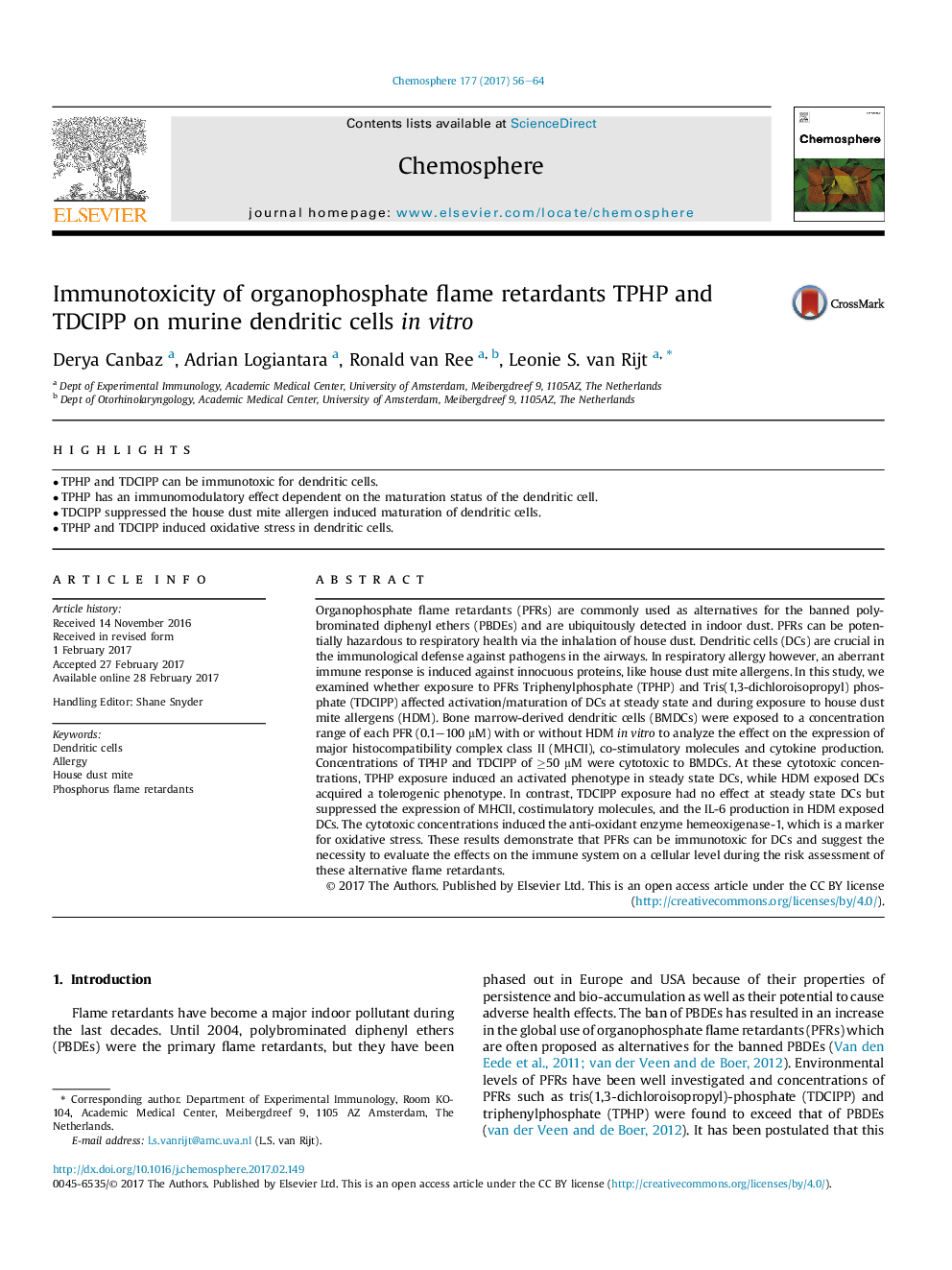| کد مقاله | کد نشریه | سال انتشار | مقاله انگلیسی | نسخه تمام متن |
|---|---|---|---|---|
| 5746293 | 1618794 | 2017 | 9 صفحه PDF | دانلود رایگان |

- TPHP and TDCIPP can be immunotoxic for dendritic cells.
- TPHP has an immunomodulatory effect dependent on the maturation status of the dendritic cell.
- TDCIPP suppressed the house dust mite allergen induced maturation of dendritic cells.
- TPHP and TDCIPP induced oxidative stress in dendritic cells.
Organophosphate flame retardants (PFRs) are commonly used as alternatives for the banned polybrominated diphenyl ethers (PBDEs) and are ubiquitously detected in indoor dust. PFRs can be potentially hazardous to respiratory health via the inhalation of house dust. Dendritic cells (DCs) are crucial in the immunological defense against pathogens in the airways. In respiratory allergy however, an aberrant immune response is induced against innocuous proteins, like house dust mite allergens. In this study, we examined whether exposure to PFRs Triphenylphosphate (TPHP) and Tris(1,3-dichloroisopropyl) phosphate (TDCIPP) affected activation/maturation of DCs at steady state and during exposure to house dust mite allergens (HDM). Bone marrow-derived dendritic cells (BMDCs) were exposed to a concentration range of each PFR (0.1-100 μM) with or without HDM in vitro to analyze the effect on the expression of major histocompatibility complex class II (MHCII), co-stimulatory molecules and cytokine production. Concentrations of TPHP and TDCIPP of â¥50 μM were cytotoxic to BMDCs. At these cytotoxic concentrations, TPHP exposure induced an activated phenotype in steady state DCs, while HDM exposed DCs acquired a tolerogenic phenotype. In contrast, TDCIPP exposure had no effect at steady state DCs but suppressed the expression of MHCII, costimulatory molecules, and the IL-6 production in HDM exposed DCs. The cytotoxic concentrations induced the anti-oxidant enzyme hemeoxigenase-1, which is a marker for oxidative stress. These results demonstrate that PFRs can be immunotoxic for DCs and suggest the necessity to evaluate the effects on the immune system on a cellular level during the risk assessment of these alternative flame retardants.
Journal: Chemosphere - Volume 177, June 2017, Pages 56-64